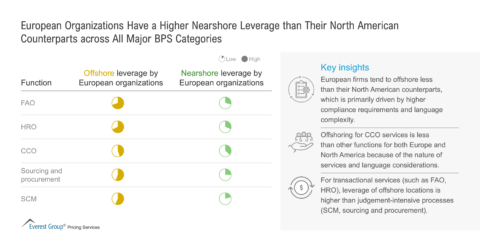Reimagine growth at Elevate – Dallas 2025. See the Agenda.
Displaying 1-10 of 13
Actionable Insights for Procurement Leaders: Sourcing Strategies in 2025
May 22, 2025
On-Demand LinkedIn Live
1 hour
Maximizing Value in Business Process Outsourcing Contracts | Webinar
On-demand Webinar
1 hour
How Will Next-gen Technologies Be Financed in CXM Delivery? | LinkedIn Live
On-Demand LinkedIn Live
1 hour
Shifts in Outsourcing Pricing: Key Insights to Plan 2024 | LinkedIn Live
On-Demand LinkedIn Live
1 hour
The Pricing Index: Pivotal Themes and What to Expect in the Next Year | LinkedIn Live
On-Demand LinkedIn Live
1 hour
Structuring an Outsourcing Deal in This Era of Uncertainty in Europe | Webinar
On-demand Webinar
1 hour
Outsourcing Pricing: 3 Pitfalls and 2 Unknowns Enterprises Need to Know in 2022 | Webinar
On-demand Webinar
1 hour











